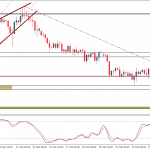After the Federal Open Market Committee raised the Federal Funds rate by 0.25% last week it became clear that Janet Yellen and her predecessor Ben Bernanke have laid a trap for President-elect Donald Trump. Each time the FOMC raises rates, increasing the rates the Fed pays on $2.1 trillion of bank deposits with it, it lessens the incentive for banks to do any business lending at all. There is a way out of this trap, but it involves moving in a counter-intuitive direction.
The trap for Trump consists of those $2.1 trillion of deposits with the Fed, created as a part of Bernanke’s “quantitative easing” schemes. As is surely becoming obvious, the “stimulus” provided by those schemes was non-existent; indeed, why should they have stimulated? Essentially $2.1 trillion of government bonds held by the banking system was replaced by $2.1 trillion of “excess reserves” deposits at the Fed – equally inert, and equally clogging up the banks’ balance sheets, although equally given a zero multiplier by the regulators in their absurd Basel-3 capital ratio calculations.
This pointless balance sheet round-trip never stimulated lending, economic activity or anything else. If Bernanke had actually dropped $100 bills from a helicopter, as he promised in 2002, he would have stimulated economic activity on Main Street, from eager shoppers picking up the free money and spending it. But instead, his helicopter was metaphorical only, and hung only over Wall Street. It enriched Wall Street a bit but stimulated no meaningful economic activity elsewhere.
Now the downside of Bernanke’s scheme is becoming clear. Most U.S. banks get a great deal of funding from retail deposits at zero cost, although of course they incur massive branch network and personnel costs to obtain that funding (this is not true for Goldman Sachs and Morgan Stanley, and is only partly true for Citi, Bank of America and J.P. Morgan.) When interest rates are low, deposits with the Fed are not especially attractive assets, even though they are given a zero weighting in capital calculations, because they offer only a modest margin above the banks’ cost of retail funding, not enough to pay for the branches.












Leave A Comment